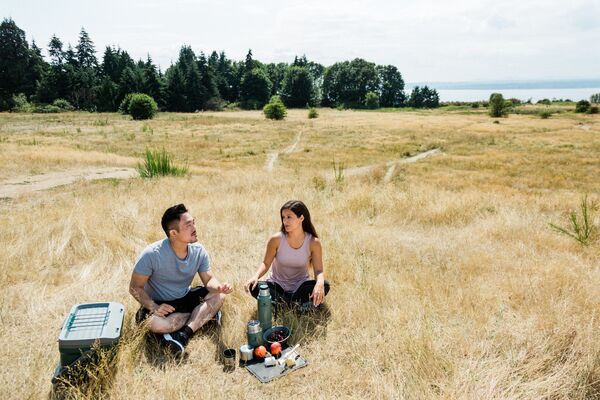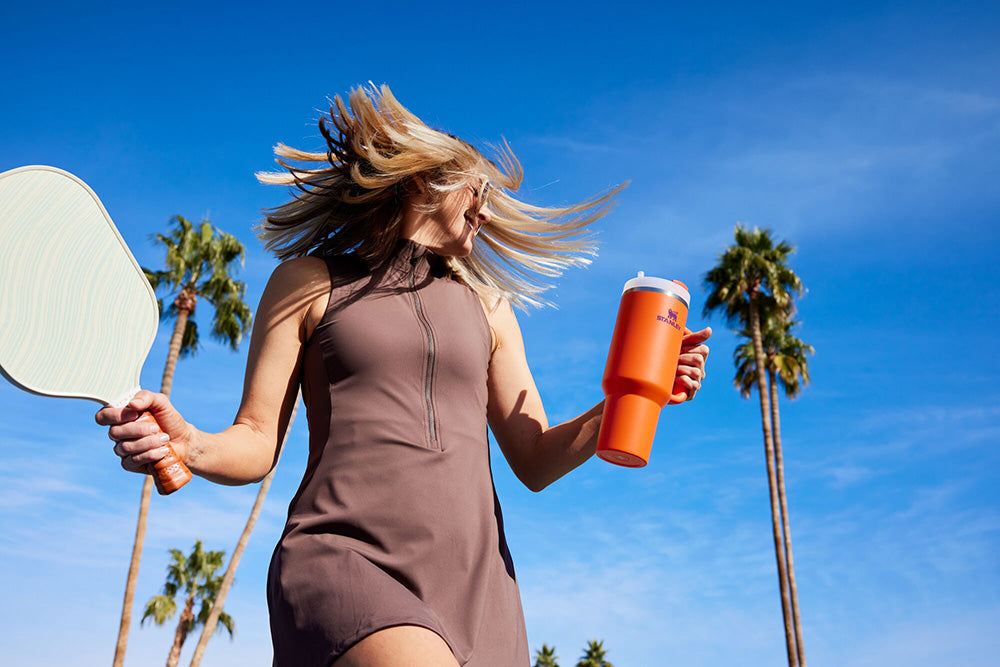
According to a 2017 American Camper Report, just over 40 million Americans camped at least once during the year. Specifics on what they did, where they camped, during what time of year, and who came with them varied, but 37% of campers above the age of 18 brought dogs as their companion(s). According to the study, that percentage is significantly higher than those that brought their kids, or who went by themselves.
In order to help prepare your dog for a camping trip, and to help ensure their safety, review the information below.
Getting Your Dog Ready to Camp
There are an array of benefits to spending time outdoors, and in order to enjoy them to the fullest, you want to be sure that you are adequately prepared. There are several things for dog owners to consider to ensure their pet is ready to camp prior to heading out. Some of these considerations can take time, so it is better to have them taken care of prior to planning the specifics of your trip.
Talk to Your Vet
The first step for preparing your dog for your time in the great outdoors is to schedule a visit to your veterinarian for a health checkup. If your pet’s health isn’t where it should be, or they have a condition that you are unaware of, small issues can become larger issues when camping.
This is especially true if you are camping off the beaten path, and your remote location is nowhere near a vet. Talking to your provider about your general camping plans can help you gain an understanding of whether or not your pup is truly up for the task. If the vet doesn’t believe your dog is physically able to take on your camping plans, it may be time to consider staying with a friend or family, boarding your dog, or toning back your plans to better fit your dog’s capabilities.
Get Vaccinations
When you are at the vet, you want to be sure that your dog is current on all of their vaccinations. Dogs need to stick to a vaccination schedule, and a few of them will need boosters in order to be effective. Be sure the following are taken care of — especially the rabies vaccine, since encounters with wild animals are possible when camping:
- Rabies (1-year, 3-year, and boosters);
- Distemper (and boosters);
- Parvovirus (and boosters);
- Adenovirus (type 1, type 2, and boosters);
- Parainfluenza (and boosters);
- Bordetella (and boosters);
- Lyme disease;
- Leptospirosis;
- Influenza (and boosters).
Additionally, you will want to ask your vet about any preventative care or medications available to mitigate any risk while camping — this could include heartworm prevention, anti-flea medication, and anti-tick repellant. If you are trying to save money, you can ask about generic options.
Work on Training
You want to be sure to have a general basis of training for your dog prior to camping — specifically obedience-related. This is for your pet’s safety, for overall campground manners, and as a courtesy to other campers. You want to be sure to have the following commands down:
- Sit;
- Stay;
- No barking;
- Come;
- Leave it.
A dog that roams around and does not listen well can be dangerous for you, your dog, other dogs/pets, other campers, and wildlife. If you do not have time to work on commands, consider looking into canine coaches or some form of dog trainer.
Update Microchip & ID Tags
Even if you are the most attentive dog owner, it is still possible for your dog to get lost when camping. The area is likely unfamiliar, and there are plenty of sounds that can spook your pet and cause even the best-trained one to run off. Be sure to look over your dog’s ID tag on their collar to ensure that the information isn’t faded or worn away, and replace the dog tag if it is. You also want to check to see that your dog’s collar isn’t loose enough for it to slip off.
If your dog does not already have a microchip, you may want to consider getting them outfitted with one. The microchip is implanted just below the surface of the skin so that it cannot fall off or become faded like an ID tag, and it helps identify your dog in the event that they are separated from you.
Packing for Your Dog
There are various items that you should be sure to bring specifically for your dog. It is generally better to overpack than under pack.
Bring the Essentials
First, grab the essentials. The essentials will vary depending on your dog and their specific needs, but should include the following (at minimum):
- Food;
- Water;
- Dog bowls;
- Any necessary medication;
- Collars with ID tags;
- Leashes;
- Waste bags.
Be sure to bring enough of everything, and bring double the amount of water and food that you need. Store water in growlers and bring food in sealed containers to keep animals away.
Get a First-Aid Kit
You may have a first-aid kit for humans, but you want to be sure to create a viable pet first-aid kid as well. The following pet first-aid supplies should be in your emergency kit:
- Veterinarian phone numbers;
- Animal poison control number (888-426-4435);
- Gauze;
- Non-stick bandages;
- Towels/cloth;
- Gauze;
- Adhesive tape;
- Milk of magnesia;
- Activated charcoal;
- Hydrogen peroxide;
- Digital thermometer;
- Eyedropper;
- Muzzle;
- Portable stretcher.
Obtain Appropriate Safety Supplies
There are additional safety supplies that you should consider in certain areas. If you are going to be around water, you may want to bring a dog-specific life jacket. Be sure that the jacket fits properly. If the area has extremely rough terrain, or you will be in the snow, you may want to bring dog booties or paw protection to ensure that your pup’s feet are protected. Again, make sure that the booties fit prior to heading out.
Keeping Your Dog Safe at Camp
There are several best practices that people camping with their dogs should follow in order to keep their dog, themselves, wildlife, and other campers safe.
Follow Local Regulations
You want to be sure to check what the local regulations are for dogs at the campsite. Most campgrounds want dogs to be on a leash and some areas are off-limits for dogs. If the campground has a website, look for any rules or regulations to follow. If you cannot find any, there may be some sort of signage at the campsite explaining the rules and regulations.
Keep Your Dog on a Leash
Even if your dog is trained well, it doesn’t mean that other dogs on the site are well-trained (let alone friendly). Keeping your dog on a leash keeps you in control in case of an unfortunate situation, like coming across wildlife or your pup getting spooked.
Stay Hydrated
You want to be sure that your dog has access to clean water at all times. Staying hydrated is crucial to avoid dehydration. Always bring more water than you actually need — both for your pet and yourself. Using insulated mugs or bottles can be useful for keeping water cold for your pup to drink when camping in hotter weather.
Be Careful of Wildlife
Keep a close eye on your dog when you’re in areas that have wildlife present. This is for your pet’s safety and the safety of the wildlife alike. You and your pup are in their home, so you want to be respectful and courteous. Dogs can disrupt small wildlife like squirrels, rabbits, and birds, but they are at risk of injury or even death with predators and larger animals, such as bears.
Respect Other Campers
Some campers aren’t “dog people,” and others just want to be left alone. You should also consider that you may not be the only person camping with pets, and not all animals — or even all dogs — get along. Avoid letting your dog wander without your supervision and remember that the only way you are in complete control is by having your dog on a leash.
Lastly, remember to have fun with your dog while camping. Go on hikes, play in the water, and plan activities for you and your pup to do. Although you want to be prepared and safe, you also want to be sure to enjoy the time you are spending outdoors.
Back to HOW-TO GUIDES
















